FACE
Facelift
The modern facelift has changed significantly from that performed in the 1960's. The facelift with a "windblown" look and that needs to be "redone" every few years is a thing of the past. Again, better understanding of the anatomy of the facial nerves, muscles, and ligaments has led us to a longer lasting facelift operation with more natural looking results.
While the standard facelift works best in improving the appearance of the neck and jawline, a midface lift works to rejuvenate the middle portion of the face. With time, the skin and tissues of the face sag downward, and a natural rejuvenation of this area requires that these tissues be replaced upwards. In certain cases, the cheeks can be reshaped by adding volume to the depleted areas, but in more significant cases the skin, fat and muscles of the cheek need to be moved upwards to restore the natural contour of the face below the eyelids.
FACE LIFT Patients no longer need to live with heavy skin and “turkey” neck deformities. Many men feel this surgery can help make them more successful in the workplace.
Shown here are before (left) and after (right) views of actual patients. Remember, every patient responds differently to surgery, and no one can be certain that he or she will get the results shown. However, these photos will illustrate the changes that are possible with these procedures.
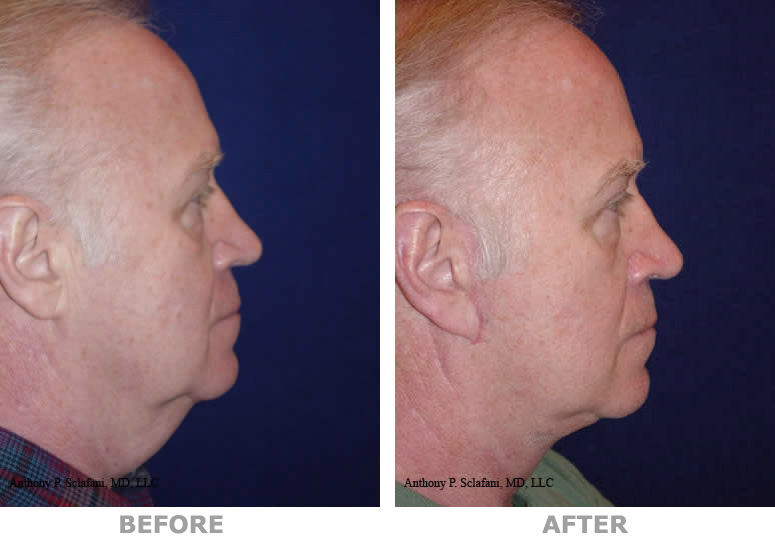
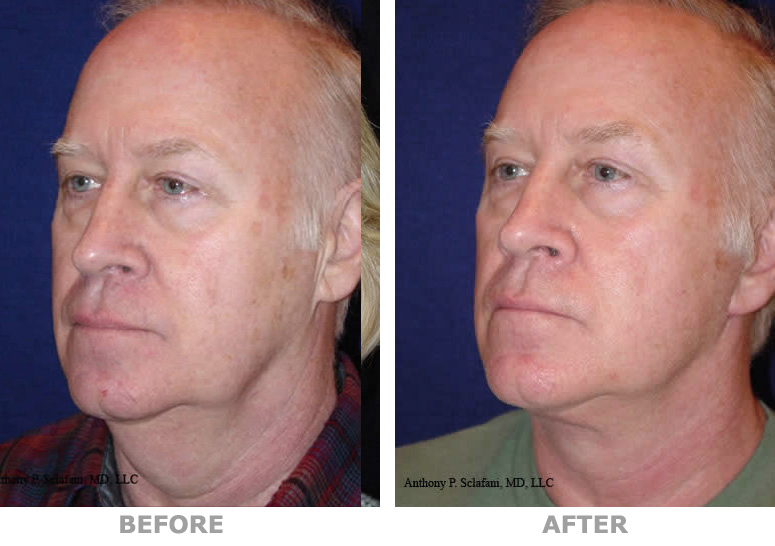
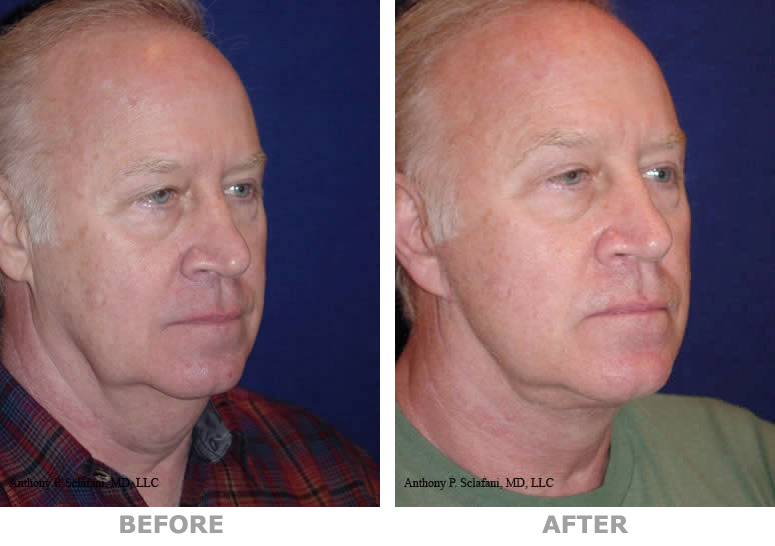
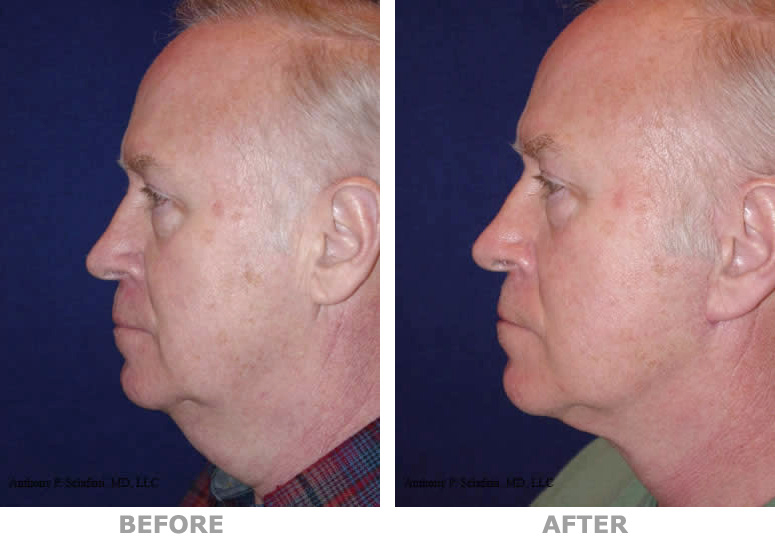
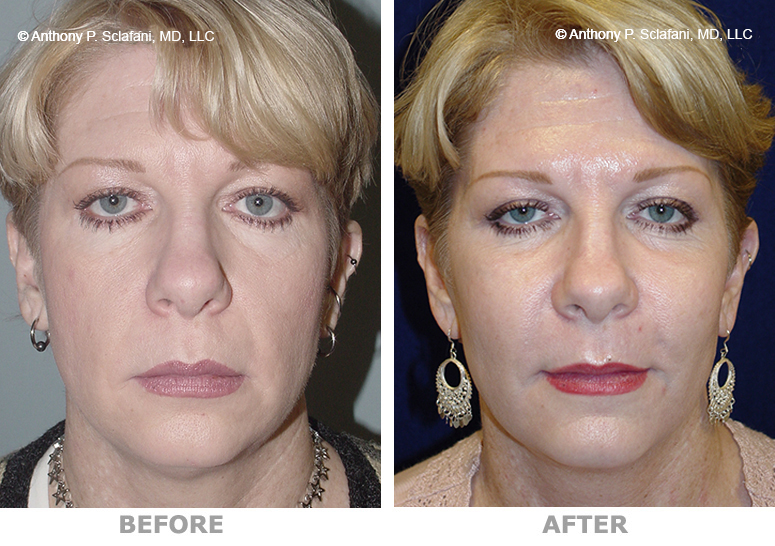
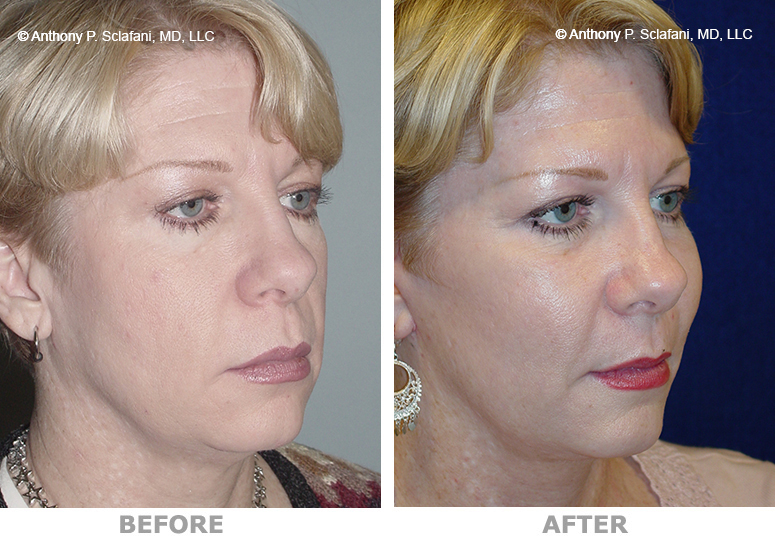
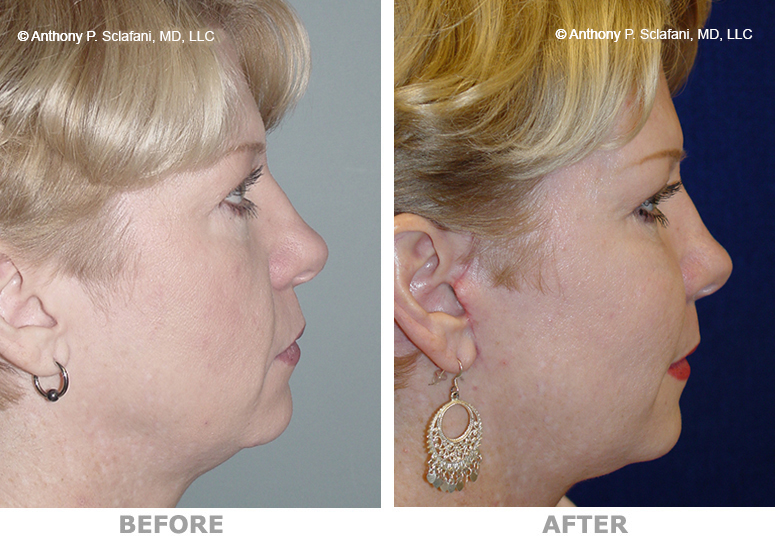
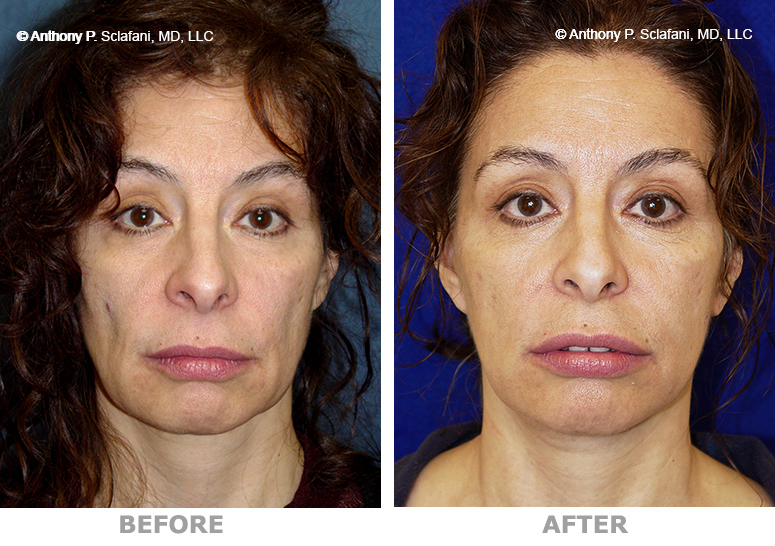
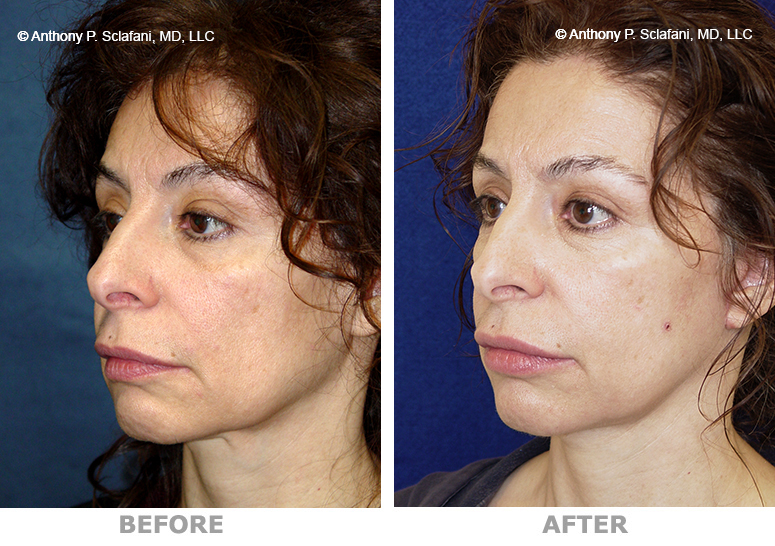
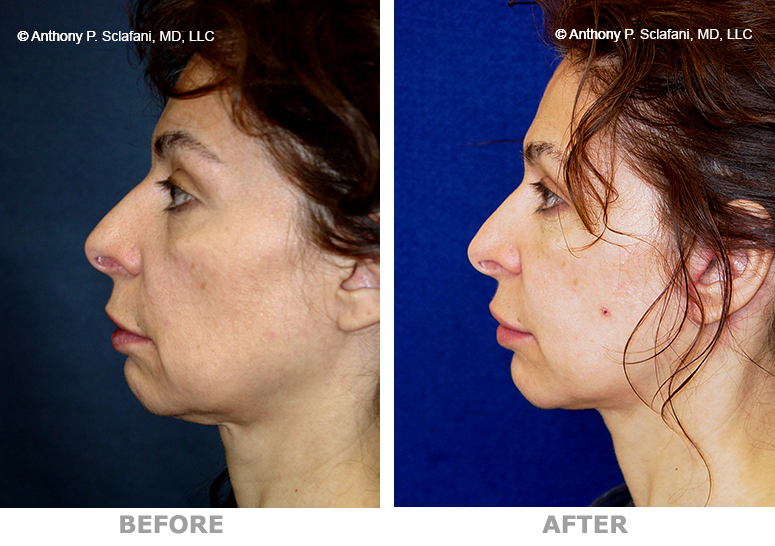
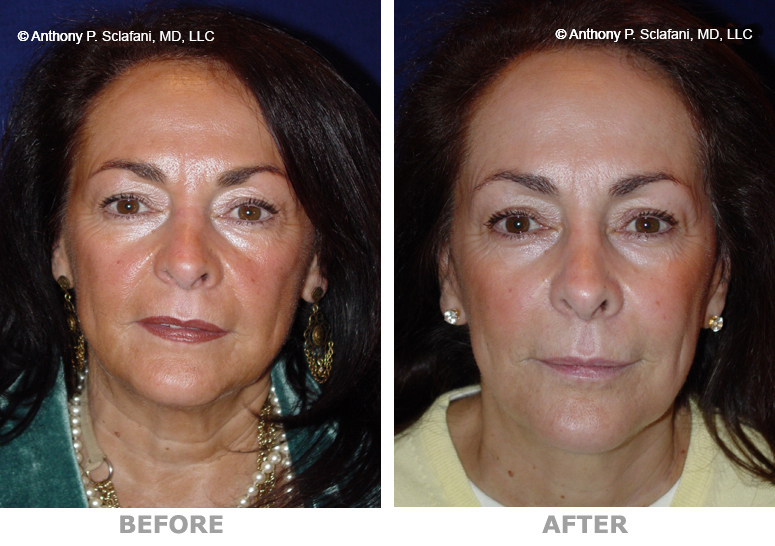
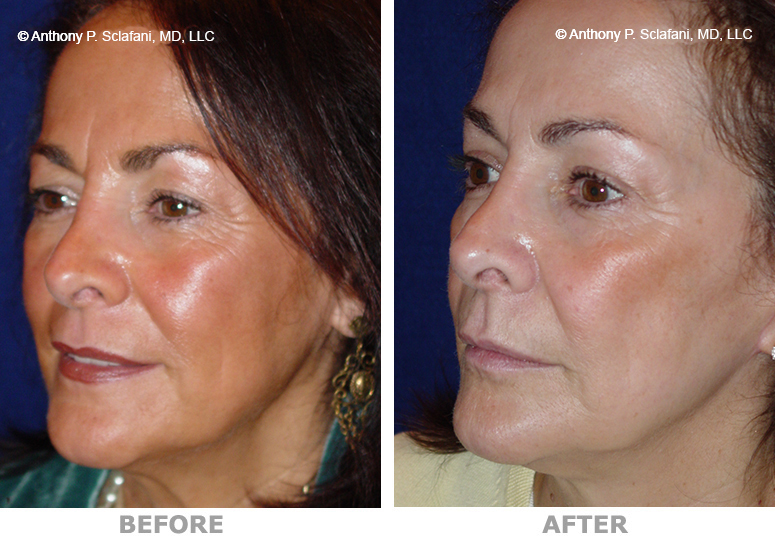
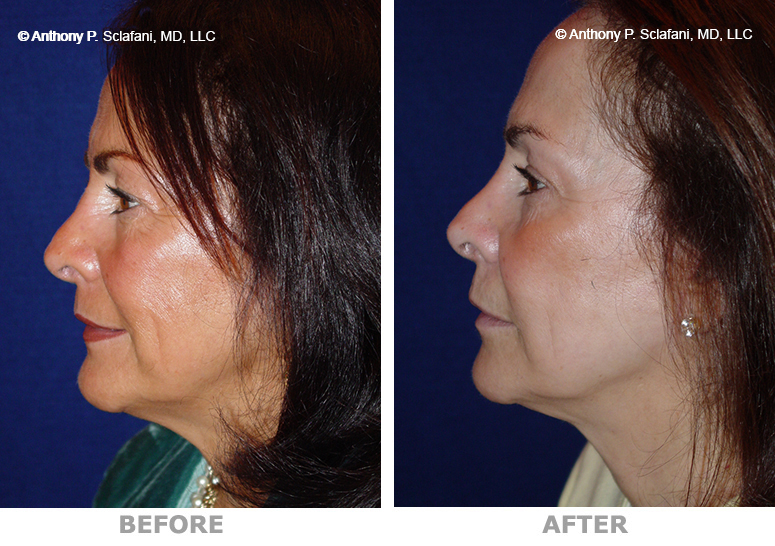
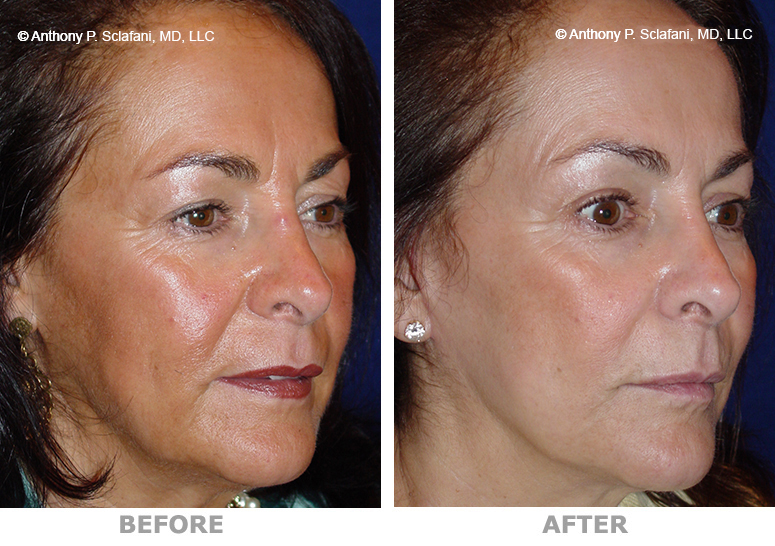
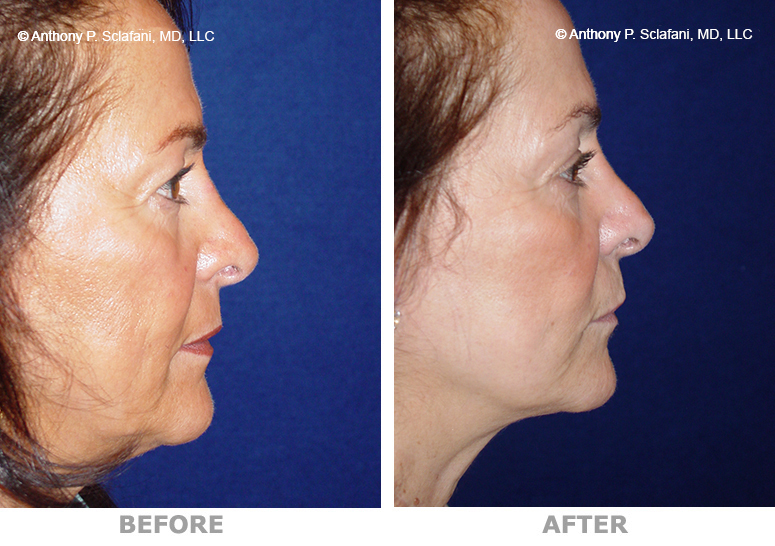
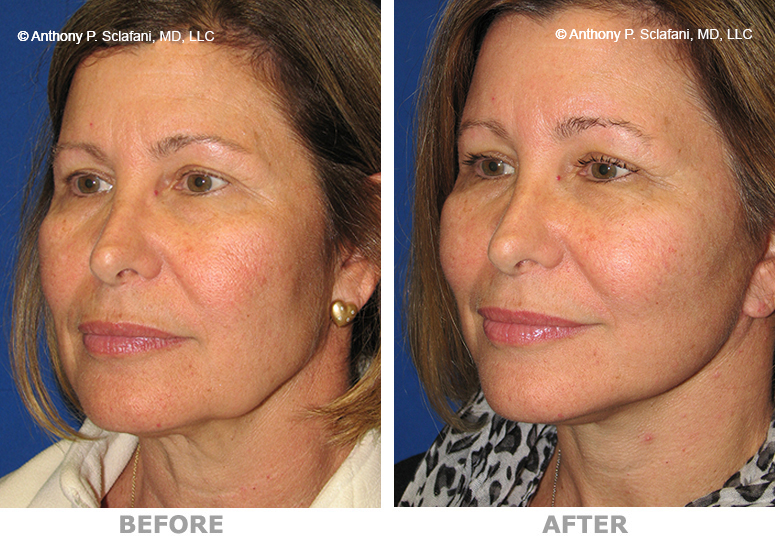
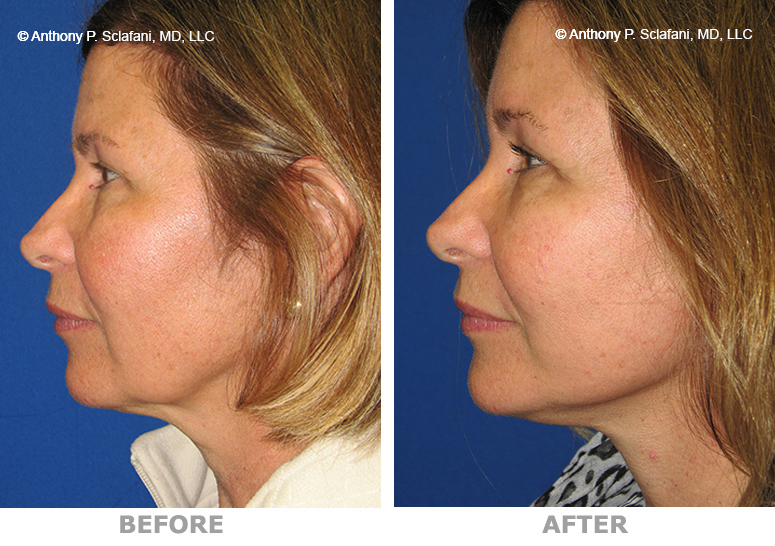
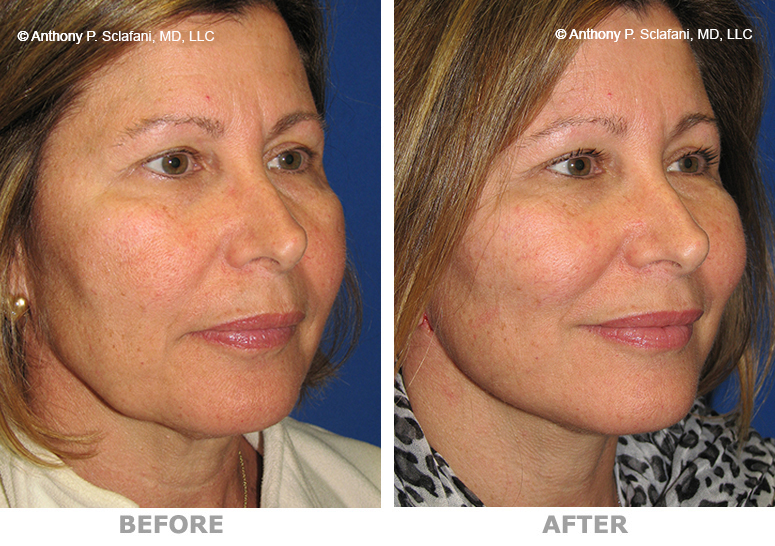
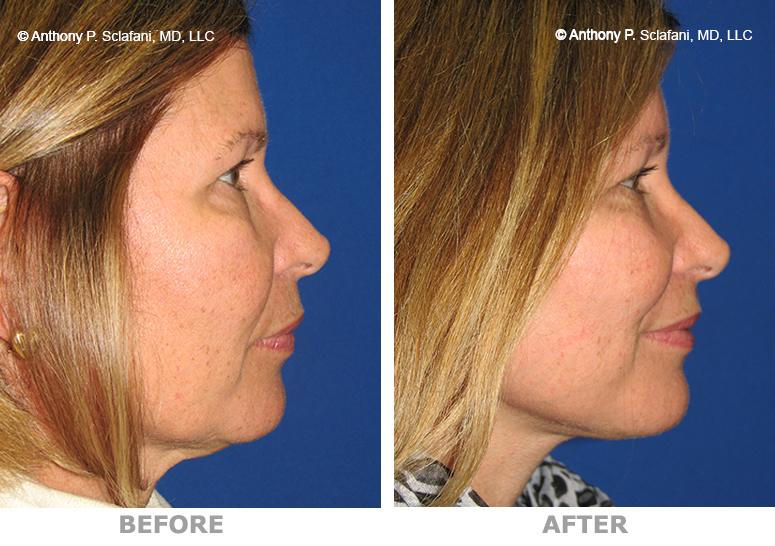
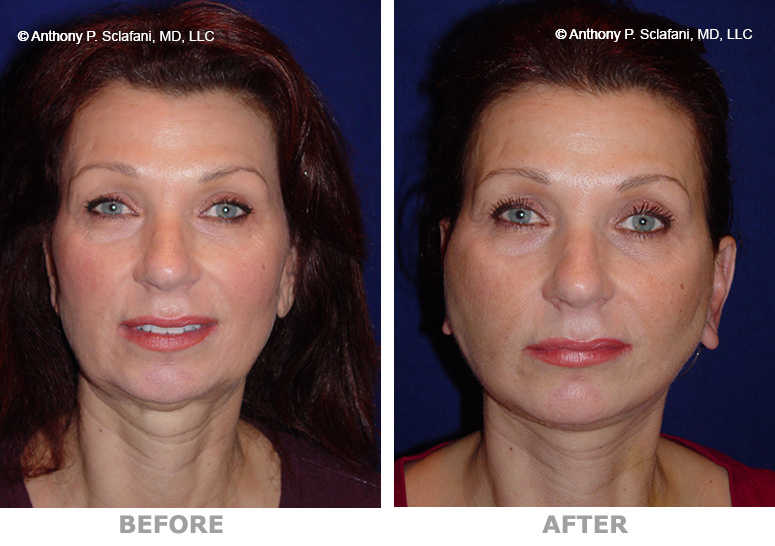
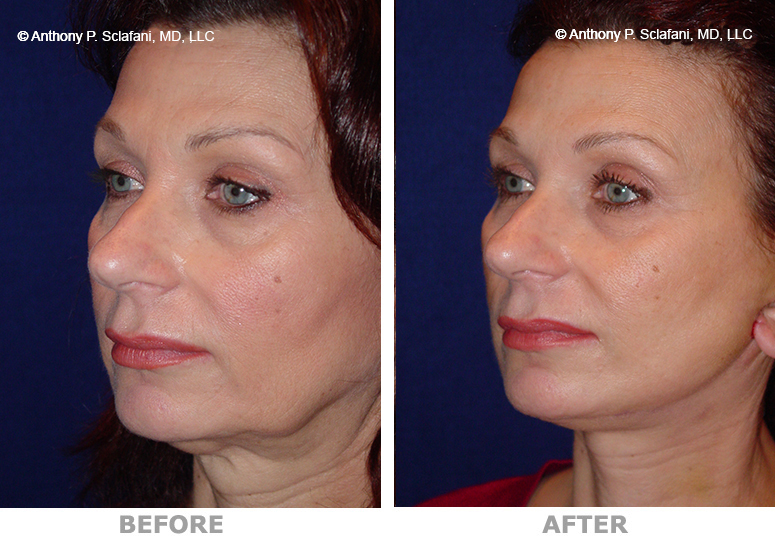
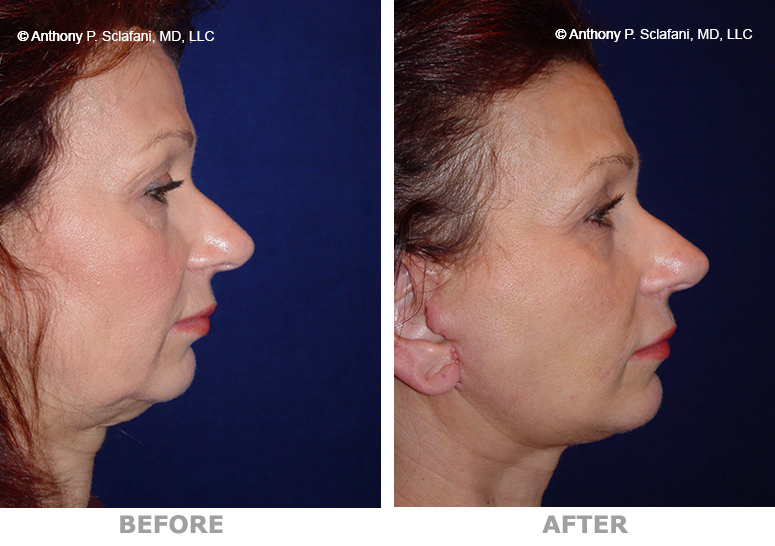
Midface lift is focused on rejuvenating the area of the face between the lower eyelids and lower cheek, and can restore a more relaxed and youthful appearance.
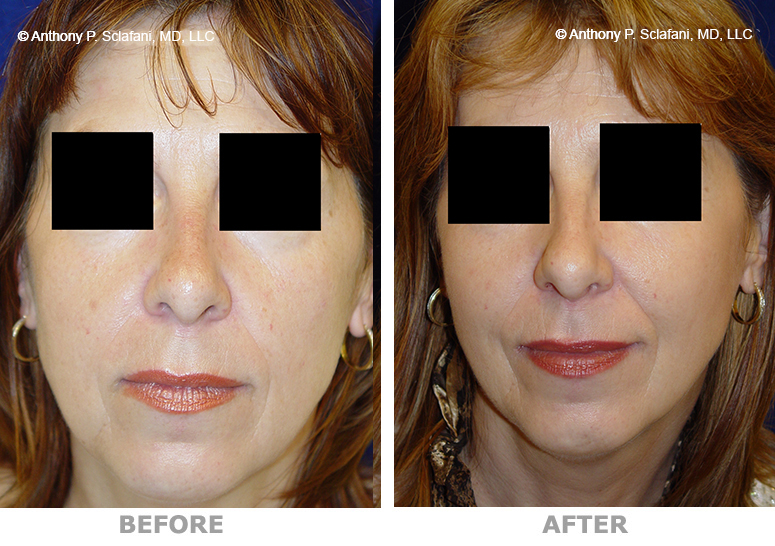
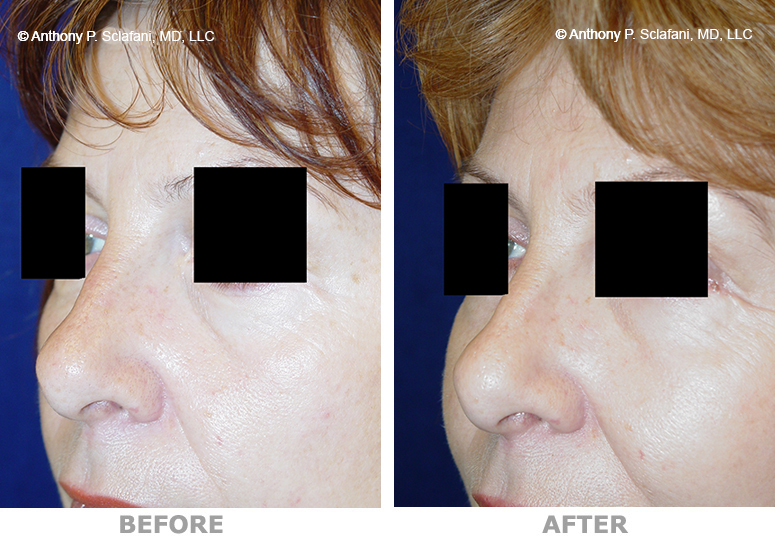
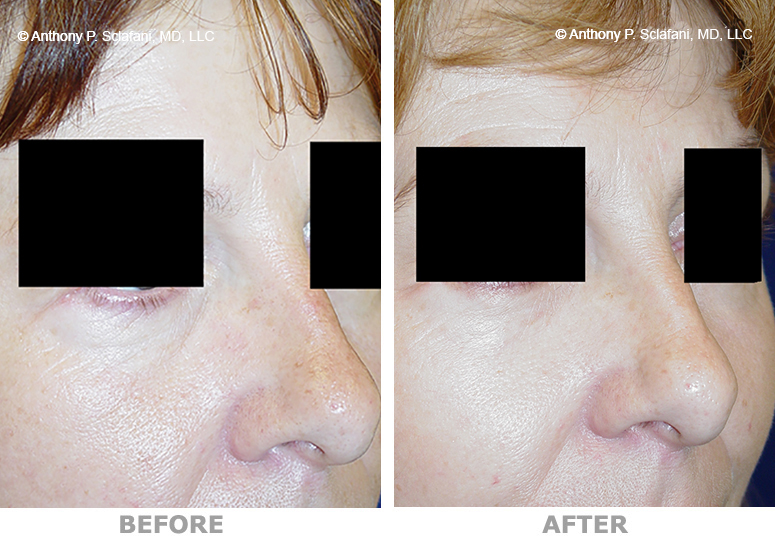
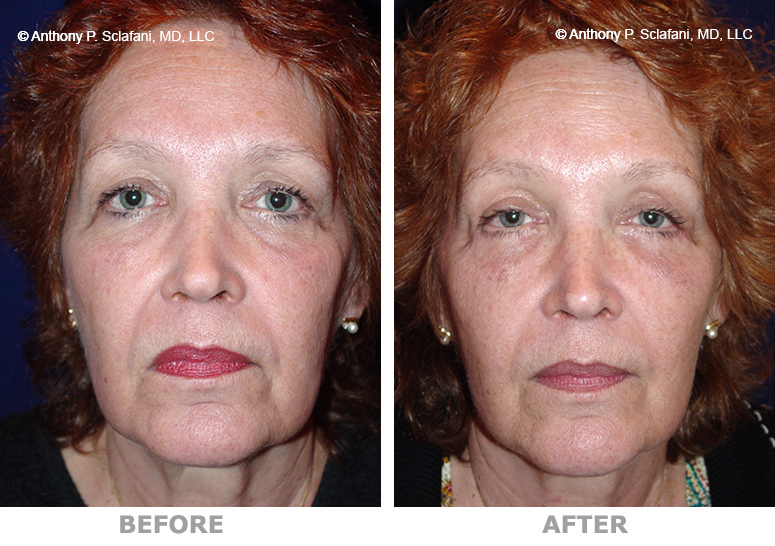
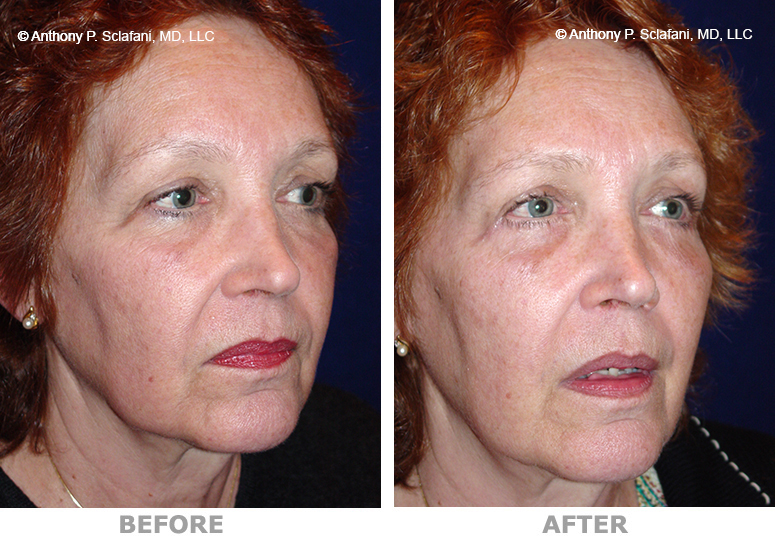
Facelift - Process and Procedure
The Process
A SMAS facelift works well to give a more defined jawline and eliminate jowls. It is often combined with a brow lift to rejuvenate the eyebrows and forehead, with submental (under the chin) liposuction to improve the angle under the chin or with a midface lift. A midface lift elevates cheek tissues so that the cheeks then assume a more youthful fullness in this elevated position, and the face looks more rested and less drawn and tired. An even simpler office procedure needing only a small incision behind the hairline in the temple uses fine sutures to suspend the cheek fat in a more pleasing position. Each of these procedures is designed to produce a specific improvement, and they can be combined to suit the individual needs of the patient.
The Procedure
The facelift is performed through an incision that begins in the scalp of the temple, wraps around the front of the ear, behind the earlobe, along the back surface of the ear and then sometimes extends into the scalp behind the ear. Rather than simply tightening the skin, as was popular in the 1960's and 1970's, a dense connective tissue called SMAS can be tightened to resuspend the tissue of the face. In contrast to suspending the skin, using the SMAS to reposition facial tissue is more long- lasting, as the SMAS will not stretch out in a few months like skin.
A midface lift is performed through incisions on the inner surface of the lower eyelid (and can be combined with a lower blepharoplasty) and also under the upper lip. Through these incisions, the tissue of the cheek can be effectively mobilized and suspended in an upward direction.
What to Expect After a Facelift
Certain physical changes are expected following facelift surgery. Some individuals experience all of the following and others only some. The degree to which each person is affected is variable and unpredictable.
DIET
It is best to start with liquids (soup, juices, etc.) immediately after surgery. Once the anesthesia has worn off and your appetite returns, regular food is allowed.
DRESSINGS/SUTURES
A large gauze dressing is placed around the head in the operating room. This is changed the day after surgery; a surgical drain is sometimes left under the skin, and is generally removed the day after surgery. The head dressing is removed on the second day after surgery, and is replaced by an elastic band which is worn continuously for the next 5 days. During the second week after surgery, this band must be worn only at night. These dressings and bands are designed to reduce post- operative swelling and promote rapid healing.
Sutures are well hidden, and are removed one week after surgery. Some sutures hidden in the hair may be removed somewhat later.
ACTIVITY AFTER SURGERY
In order to allow your tissues to heal properly, we ask that you refrain from brisk physical activity for two weeks. Walking and non-physical activities are allowed, but it is best not to exercise for the first 2 weeks. After the first 2 weeks, aerobics, running, stair climbing, exercise bicycling and treadmills are permitted, but weight lifting (free weights or machines) should not be used until after the end of the third week after surgery. However, once the effects of the anesthetics have worn off, it is not necessary to remain in bed or at home. You may shower as soon as the bandages have been replaced by the elastic band. This band should immediately be replaced after each shower.
SWELLING/BRUISING
Facial swelling is expected and may be more pronounced 24- 72 hours after surgery than it is immediately following the procedure. The facelift dressing makes this swelling appear to be greater than it really is. Sleeping with your head elevated and sitting upright during the day for several days following surgery will help minimize swelling. Most swelling will gradually resolve in 10 days. Bruising, too, is normal. The bruises on your face may "fall" onto your neck and upper chest before disappearing. Most bruising will resolve in the first 7 days after surgery and may be concealed with makeup one week after surgery. In order to limit bruising and swelling, ice compresses should be applied over both cheeks, neck and eyelids for the first 24- 36 hours after surgery. Compresses should be applied for 20 minutes at a time, with 20 minutes before reapplying. Also, homeopathic medications Arnica Montana and Bromelain may limit bruising and swelling. This is best started at least 2 weeks before surgery and continued for 3 weeks; check with your doctor before using these.
BLEEDING
Minimal oozing of blood and tissue fluid along the suture/staple lines can occur for a few days following surgery. Bleeding that is severe or does not stop with 10 minutes of continuous pressure is rare and should be reported to our office.
PAIN/DISCOMFORT
Most patients experience little pain afterwards, complaining instead of mild discomfort or soreness, easily controlled with acetaminophen or acetaminophen with codeine.
TIGHTNESS
Facial tightness is greatest in the first several weeks after surgery, but may persist to some degree for several months. This is due to subtle swelling in the facial tissues that will subside. Be assured, your face will again feel "normal".
ITCHING/NUMBNESS
Itching along suture lines and in areas adjacent to the face (scalp, forehead) is common and temporary. A feeling that the face, neck and earlobe are numb also occurs. Normal sensation usually returns within a few weeks.
HEAVINESS
Your face may feel "heavy" for a few weeks following surgery. This is due to swelling and changes that occur with healing. Use of the chin strap will help alleviate this sensation.
